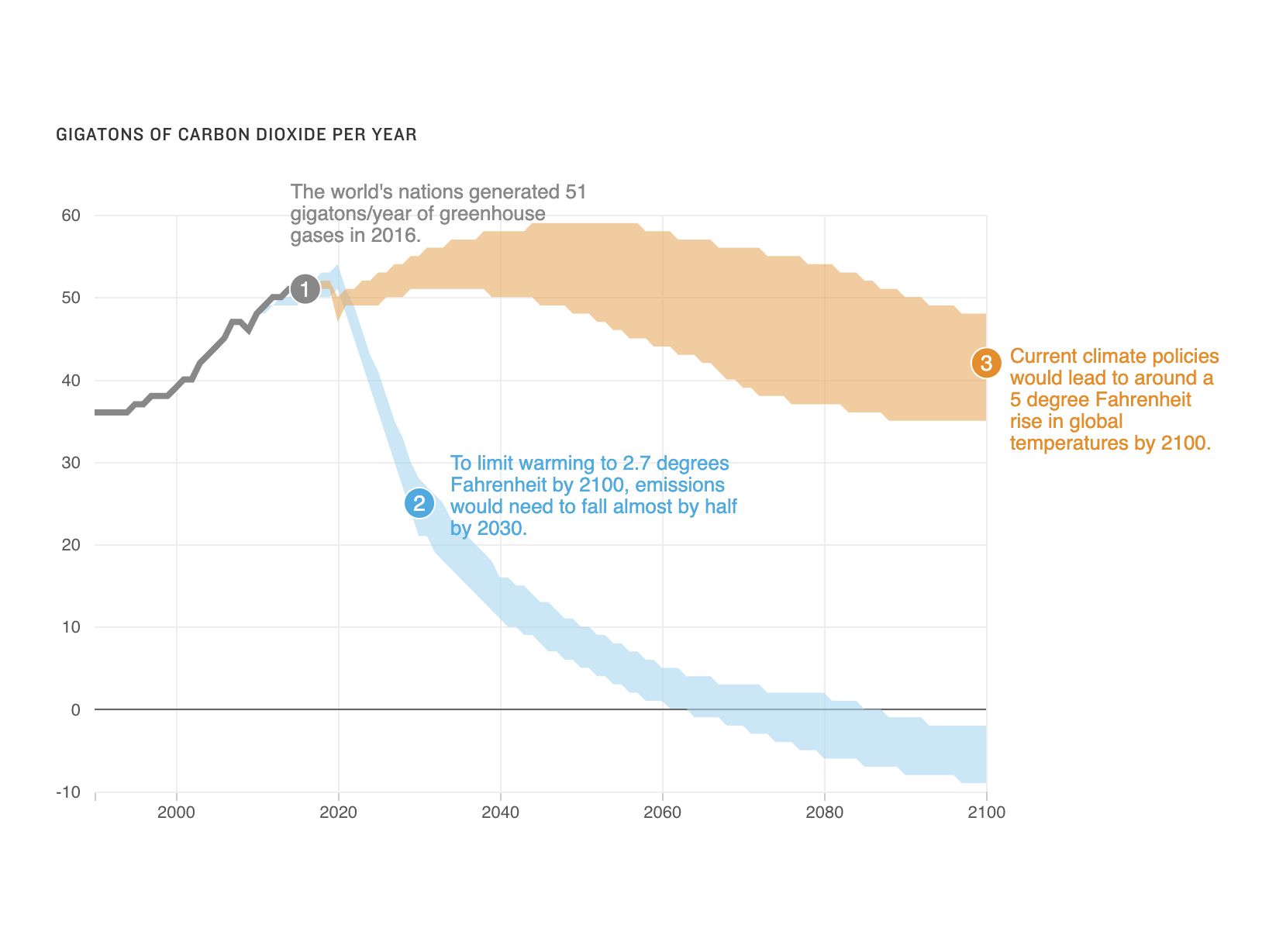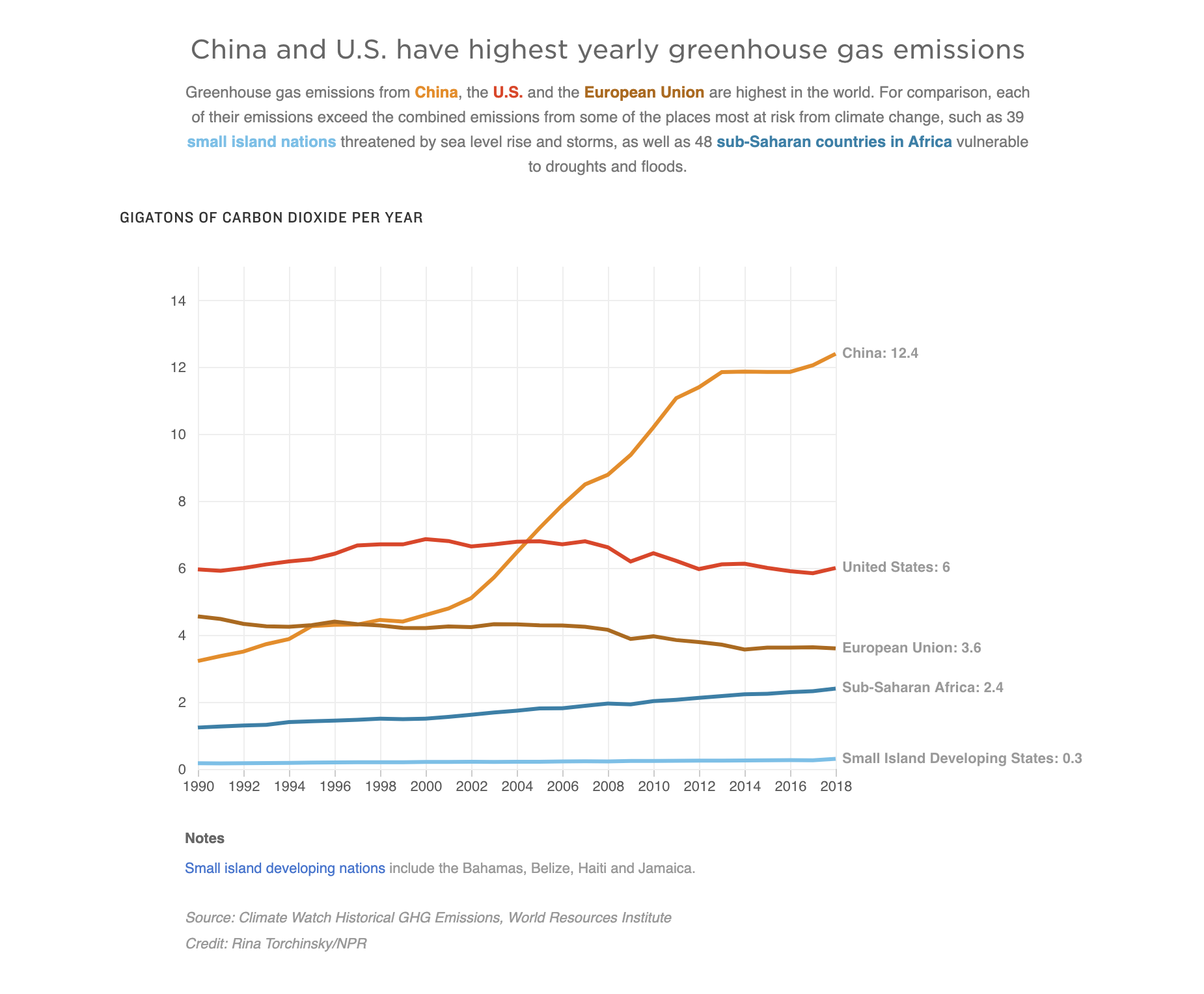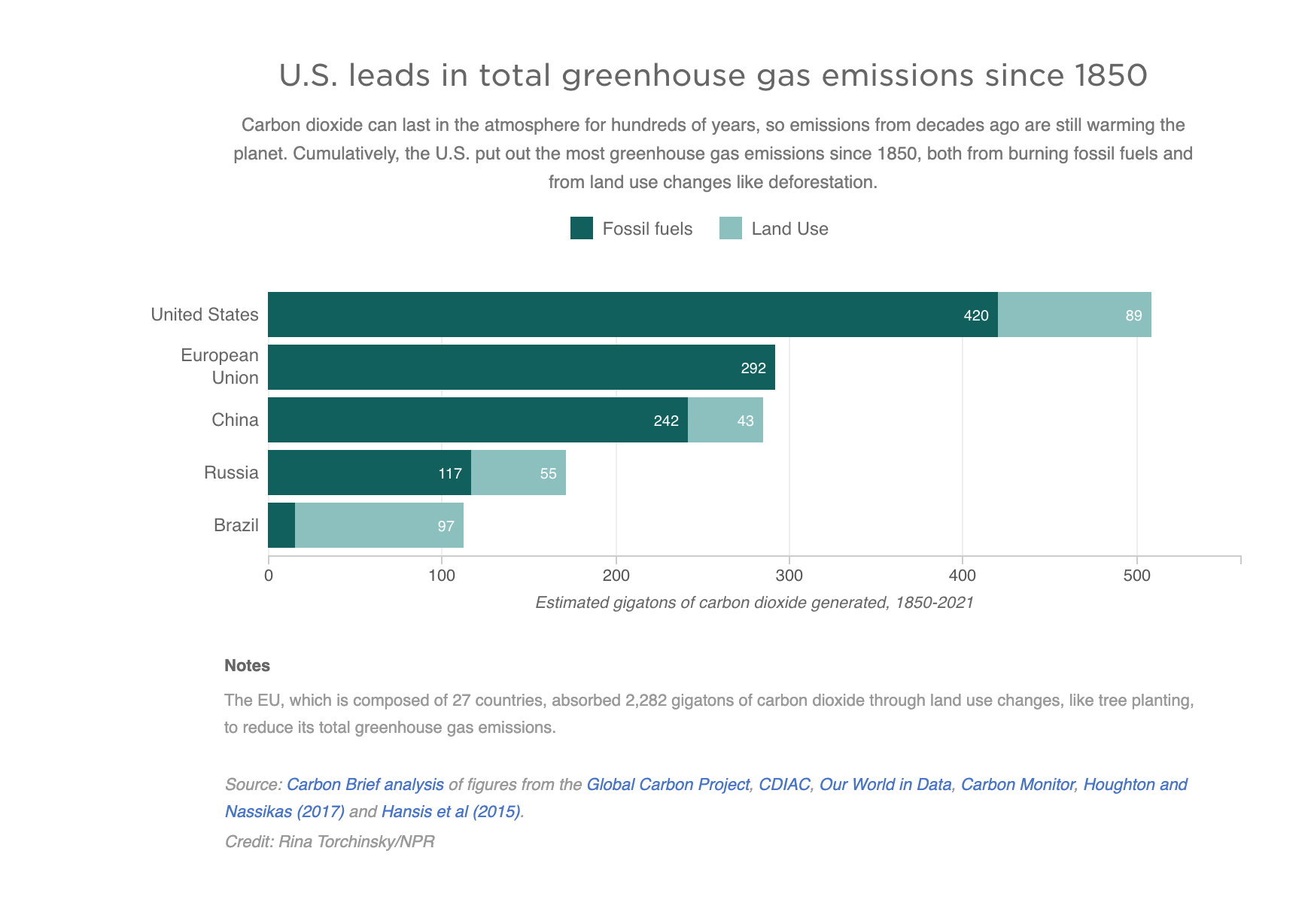Leaders from around the world are gathering in Glasgow, Scotland, to hammer out new pledges to fight climate change. The stakes are high. Scientists warn that heat-trapping emissions must fall dramatically by 2030. Otherwise, the world faces more extreme hurricanes, floods and droughts, likely displacing millions of people. Still, negotiations at the COP26 meeting are expected to be tough. Here are four reasons why.
#1 The world is not on track to avoid extreme climate change
Countries have already made pledges to cut their greenhouse gas emissions by moving away from burning fossil fuels. But added together, those pledges don’t reduce emissions enough to avoid the worst damage from climate change. Current policies put the world on track for around 4.8 degrees of warming by 2100, compared with global average temperatures in the mid-19th century.
Globally, the goal is to limit warming to 2.7 degrees Fahrenheit, which scientists say is a crucial difference. The world would still experience worsening heat waves and storms, but not as intense and dangerous. Coral reefs would have a shot at avoiding a massive die-off. But to achieve that, emissions need to fall about 45% by 2030, compared with 2010 levels. That means countries will need to commit to far more ambitious goals.

#2 Wealthiest nations contribute the most to climate change
The global goal is to reduce emissions, but questions remain about which countries should enact most of the reductions. Developing countries contribute a small fraction of the emissions from cars and power plants. But they’re enduring some of the worst damage from climate change, like island nations that face being erased by sea level rise.



9(MDAxOTAwOTE4MDEyMTkxMDAzNjczZDljZA004))
